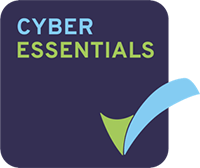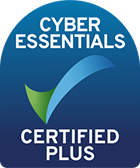Frequently asked questions
We get asked a lot of questions and we’ve answered most of them already here
PPG (Photoplethysmography) is a non-invasive method for measuring blood flow and vital signs in the body. It works by using light to detect changes in the volume of blood vessels. PPG technology is commonly used in medical settings, such as hospitals and clinics, but it is also being used in wearable devices like smartwatches and fitness trackers.
rPPG stands for remote photoplethysmography, which is a method of measuring blood flow using a camera or other optical sensor. Instead of requiring physical contact with the skin, rPPG can be performed from a distance, making it useful for monitoring large groups of people or for applications where physical contact is not possible or desirable. rPPG technology is still relatively new, but it has the potential to revolutionize many industries, including healthcare, insurance, and care management.
PPG technology uses light to detect changes in the volume of blood vessels in the skin. By shining a light onto the skin and measuring how much of that light is absorbed, PPG sensors can detect changes in blood flow, which can be used to calculate heart rate, blood pressure, and other vital signs. This technology is commonly used in medical settings to monitor patients, but it is also being used in wearable devices like smartwatches and fitness trackers. rPPG technology works similarly, but it uses a camera or other optical sensor to detect changes in blood flow from a distance. By analyzing the subtle changes in skin color caused by changes in blood flow, rPPG algorithms can calculate heart rate, blood pressure, and other vital signs without requiring physical contact with the skin. To use rPPG to get health data from a person’s face, a camera or optical sensor is pointed at the person’s face from a distance. The camera captures a series of images or video frames, which are analyzed by rPPG algorithms to calculate vital signs.Overall, PPG and rPPG are both powerful tools for monitoring vital signs and health data from a person’s face. While PPG is more commonly used in medical settings and wearables, rPPG has the potential to revolutionize many industries.
Our software and service are designed to provide information related to maintaining or improving general health, but they are not intended for medical use and should not be used to diagnose, treat, prevent, or cure any diseases. We are currently in the process of building our Quality Management System (QMS) and gathering clinical evidence in preparation for seeking regulatory approval as a medical device in the future. Our product is not currently marked with UKCA/CE certification and is not available for use as a medical device in UK markets.
At the moment, our product is not yet submitted to the FDA for regulatory approval as a medical device. However, we are actively building our Quality Management System and gathering clinical evidence with our partners in California to prepare for the submission process. Our goal is to ensure that our product meets all regulatory requirements and is safe and effective for its intended use.
Contactless health monitoring is a non-invasive method of measuring and tracking vital health parameters without physical contact with the individual being monitored. This approach relies on advanced technologies such as remote photoplethysmography (rPPG), computer vision, and machine learning algorithms to collect essential health data from a distance. This type of remote vital signs monitoring is particularly beneficial for telehealth platforms, healthcare providers, fitness and wellness companies, insurance providers, and corporations, as it can improve patient care, enhance health outcomes, and facilitate remote health management.
Vastmindz can extract several vital health parameters from a face using their advanced remote photoplethysmography (rPPG) technology and machine learning algorithms. The key parameters that can be obtained from a facial reading include:
Heart Rate: Vastmindz measures the user’s heart rate in beats per minute (BPM) by analyzing subtle facial color changes associated with blood flow.
Respiratory Rate: By detecting chest and shoulder movements, Vastmindz determines the user’s respiratory rate in breaths per minute.
Oxygen Saturation (SpO2): The technology estimates the user’s oxygen saturation levels by analyzing the color variations in facial skin, indicating the percentage of oxygenated hemoglobin in the blood.
Blood Pressure: Vastmindz estimates systolic and diastolic blood pressure values by analyzing the relationship between heart rate and facial color changes.
Heart Rate Variability (HRV): The technology assesses the time interval between heartbeats, providing insights into the user’s heart rate variability, an essential indicator of overall health and stress levels.
Mental Stress: By evaluating facial expressions, micro-movements, and heart rate variability, Vastmindz can estimate the user’s mental stress levels, which can impact overall health and well-being.
Vastmindz’s cutting-edge technology allows for non-invasive, user-friendly, and convenient monitoring of these vital health parameters, facilitating proactive health management and promoting better health outcomes.
Our system is designed to handle readings from individuals of different ethnicities, including those with skin tones that vary across the Fitzpatrick scale. We have taken great care to ensure that our technology is accurate and reliable for all users, regardless of their ethnicity or skin tone. Our team has conducted extensive testing on a diverse group of individuals to ensure that our system can accurately capture and interpret health data across various ethnicities and skin tones. We believe that everyone should have access to reliable and accurate health monitoring technology, and we are committed to providing a solution that is inclusive and effective for all.
We do not provide treatments or recommendations as our technology is designed to provide health data and insights to individuals and their healthcare providers. Our system is not intended to diagnose, treat, prevent, or cure any diseases or medical conditions. Instead, our technology offers a non-invasive method of measuring and tracking vital health parameters, which can be used to inform and support decision-making related to health and wellness. We believe that individuals should work closely with their healthcare providers to interpret and act on the health data provided by our technology. Our goal is to empower individuals with the information they need to make informed decisions about their health and wellbeing.
Our technology requires devices equipped with a camera, such as smartphones, tablets, laptops, and desktop computers, to capture the necessary remote health data. This camera-based approach is essential for our system to perform remote photoplethysmography (rPPG) measurements and gather other vital health data. We continue to prioritize compatibility with camera-equipped devices to ensure that our technology remains effective and accessible for individuals and healthcare providers.

